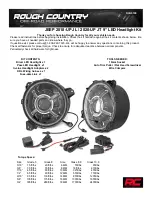
MAINTENANCE AND SERVICE
}}
401
Car wash
The car should be washed as soon as it
becomes dirty. Wash the car in a car wash with
oil separator. Use car shampoo.
Handwashing
•
Remove bird droppings from the paintwork
as soon as possible. Bird droppings contain
substances that affect and discolour paint-
work very quickly. An authorised Volvo work-
shop is recommended for the removal of any
discoloration.
•
Hose down the underbody.
•
Rinse the whole car until the loose dirt has
been removed in order to reduce the risk of
scratches from washing. Do not spray directly
onto the locks.
•
If necessary, use cold degreasing agent on
very dirty surfaces. Note that the surfaces
must not then be warmed up by the sun!
•
Wash using a sponge, car shampoo and
plenty of lukewarm water.
•
Clean the wiper blades with a lukewarm soap
solution or car shampoo.
•
Dry the car using a clean, soft chamois or a
water scraper. If you avoid allowing water
droplets to dry in strong sunlight then the
risk of water stains that may need to be pol-
ished away is reduced.
WARNING
Always have the engine cleaned by a work-
shop. There is a risk of fire if the engine is hot.
Dirty headlamps have impaired functionality.
Clean them regularly, when refuelling for
example.
Do not use any corrosive cleaning agents but
use water and a non-scratching sponge
instead.
Outside lighting such as headlamps and rear
lamps may temporarily have condensation on
the inside of the lens. This is normal, all exte-
rior lighting is designed to withstand this.
Condensation is normally vented out of the
lamp housing when the lamp has been
switched on for a time.
Automatic car washes
An automatic car wash is a simple and quick way
of washing the car, but it cannot reach every-
where. Handwashing the car is recommended for
achieving optimum results.
The car must only be washed by hand over
the first few months. This is because the paint
is more delicate when it is new.
High-pressure washing
When using high-pressure washing, use sweep-
ing movements and make sure that the nozzle
does not come closer than 30 cm to the surface
of the car (the distance applies to all exterior
parts). Do not spray directly onto the locks.
Testing the brakes
WARNING
Always test the brakes after washing the car,
including the parking brake, to ensure that
moisture and corrosion do not attack the
brake linings and reduce braking perform-
ance.
Lightly depress the brake pedal now and then
when driving long distances in rain or slush. The
heat from the friction causes the brake linings to
warm up and dry. Do the same thing after starting
in very damp or cold weather.
Wiper blades
Asphalt, dust and salt residue on wiper blades, as
well as insects, ice etc. on the windscreen, impair
the service life of wiper blades.
Summary of Contents for S 60
Page 1: ...OWNER S MANUAL ...
Page 2: ......
Page 13: ...INTRODUCTION ...
Page 28: ......
Page 29: ...SAFETY ...
Page 58: ......
Page 59: ...INSTRUMENTS AND CONTROLS ...
Page 61: ...INSTRUMENTS AND CONTROLS 59 Overview left hand drive cars ...
Page 64: ... INSTRUMENTS AND CONTROLS 62 Overview right hand drive cars ...
Page 123: ...CLIMATE CONTROL ...
Page 146: ......
Page 147: ...LOADING AND STORAGE ...
Page 156: ......
Page 157: ...LOCKS AND ALARM ...
Page 185: ...DRIVER SUPPORT ...
Page 270: ......
Page 271: ...STARTING AND DRIVING ...
Page 323: ...WHEELS AND TYRES ...
Page 345: ...WHEELS AND TYRES 343 Country Area Brazil Ukraine ...
Page 346: ... WHEELS AND TYRES 344 Country Area Israel ...
Page 356: ......
Page 357: ...MAINTENANCE AND SERVICE ...
Page 409: ...MAINTENANCE AND SERVICE 407 Related information Rustproofing p 404 ...
Page 410: ......
Page 411: ...SPECIFICATIONS ...
Page 438: ......
Page 451: ......
















































